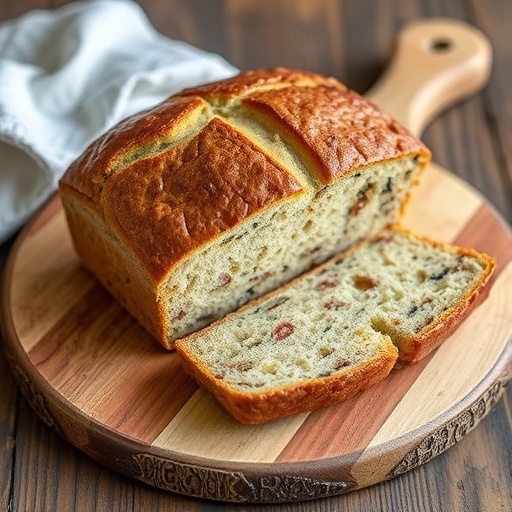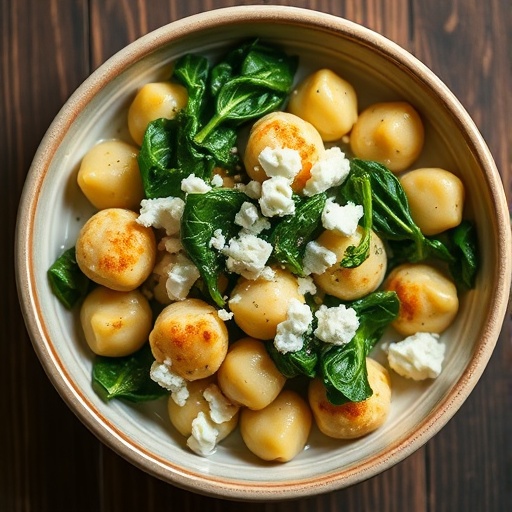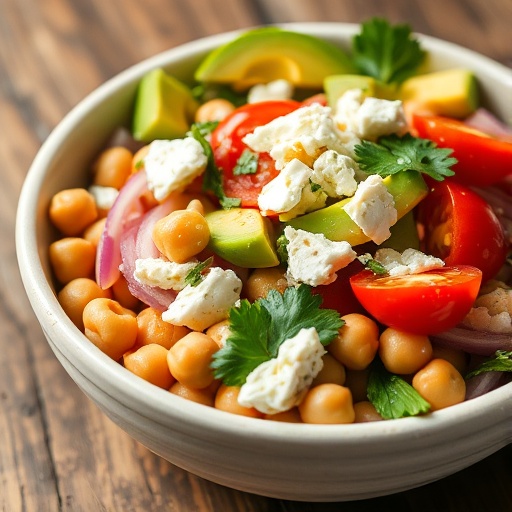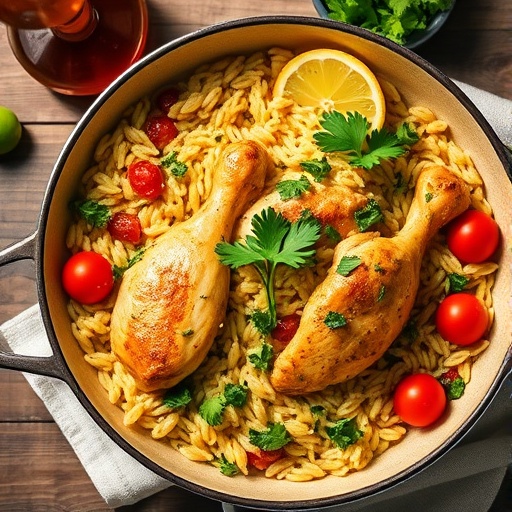Introduction
Did you know that over 70% of home cooks wish they could bake fresh bread more often, but feel daunted by complex recipes and lengthy proofing times? What if I told you that crafting a warm, fragrant loaf of homemade bread doesn't have to be an all-day affair, and can seamlessly fit into even the busiest weeknight schedule? Forget the often intimidating world of traditional bread recipes with their multi-stage proofs and extensive kneading. This quick dinner bread recipe is designed to shatter those pre-conceived notions, offering a remarkably simple and speedy path to pull-apart perfection. We're talking fresh-from-the-oven goodness that redefines what you thought was possible for quick breads. Get ready to transform your dinner table with minimal effort and maximum flavor.
Ingredients List
To embark on this delightful baking journey, you'll need just a handful of straightforward ingredients. Focus on quality, as a few good ingredients truly shine in simple bread recipes.
- All-Purpose Flour (3 cups): The backbone of our quick bread. For a slightly nuttier flavor and added fiber, you can swap out 1/2 cup for whole wheat flour, though the texture will be a touch denser.
- Active Dry Yeast (1 packet or 2¼ teaspoons): The magic leavening agent that gives our bread its wonderful lift. Ensure your yeast is fresh; old yeast is the number one culprit behind flat loaves!
- Granulated Sugar (2 tablespoons): Feeds the yeast and adds a subtle sweetness that balances the savory notes. Honey or maple syrup can be used as a 1:1 substitute for a different flavor profile.
- Salt (1 teaspoon): Crucial for flavor and also controls yeast activity. Don't skip it! Sea salt or kosher salt lend a cleaner taste.
- Warm Water (1 cup, 105-115°F / 40-46°C): This is where the yeast awakens. Too hot, and you kill the yeast; too cold, and it won't activate. Think bathwater warm.
- Olive Oil (2 tablespoons, plus more for greasing): Adds tenderness and a lovely subtle aroma. Melted butter is an excellent alternative for a richer flavor.
- Optional Toppings: A sprinkle of flaky sea salt, dried herbs like rosemary or oregano, or even a dusting of garlic powder can elevate your loaf from simple to sensational.
Prep Time
This recipe is engineered for efficiency, proving that exceptional results don't demand excessive waiting.
- Prep Time: 15 minutes
- Active Cook Time: 25-30 minutes
- Total Time: 40-45 minutes
At just under an hour, this quick bread recipe shaves off roughly 50% of the typical hands-on time compared to many traditional yeast bread recipes, which often demand hours of proofing. It's a genuine time-saver, delivering warm, homemade goodness without the wait.
Preparation Steps
Step 1: Activate the Yeast
In a large mixing bowl, combine your warm water (remember, 105-115°F is key!), granulated sugar, and active dry yeast. Give it a gentle swirl. Let this mixture sit for 5-10 minutes. Practical Tip: You'll know your yeast is active when it becomes foamy and bubbly on the surface, resembling a cappuccino. If it doesn't foam, your water might have been too hot or too cold, or your yeast might be expired.
Step 2: Combine Dry and Wet Ingredients
Once your yeast is bubbling with life, add the salt and olive oil to the wet mixture. Gradually add the all-purpose flour, about a cup at a time, mixing with a wooden spoon or a stand mixer on low speed. Practical Tip: Aim for a shaggy dough that just comes together. Overmixing can lead to a tough loaf, so stop when the flour is mostly incorporated. For the best consistency in your bread recipes, a gentle hand is always best.
Step 3: Knead the Dough
Turn the dough out onto a lightly floured surface and knead it for about 5-7 minutes. The dough should become smooth and elastic, no longer sticky to the touch. Practical Tip: If you have a stand mixer with a dough hook, this part is even easier: knead on medium-low speed for 4-5 minutes. The dough should pull away from the sides of the bowl. This short kneading time is crucial for our quick bread structure.
Step 4: First Rise (Quick Proof!)
Lightly grease a clean bowl with a little olive oil. Place the kneaded dough in the bowl, turning it once to coat. Cover the bowl with plastic wrap or a clean kitchen towel. Place it in a warm spot for 20-30 minutes, or until it has visibly risen and looks puffy. Practical Tip: A "warm spot" could be near a sunny window, on top of a preheating oven, or even in a turned-off oven with the light on. This accelerated proofing is a hallmark of truly quick bread recipes.
Step 5: Shape and Second Rise (Optional, but Recommended)
Gently punch down the risen dough to release the air. You can shape it into a traditional round loaf, divide it into rolls, or place it into a greased 9×5 inch loaf pan. Cover again and let it rise for another 10-15 minutes. Practical Tip: For even individual rolls, divide the dough into 12 equal pieces before shaping. This second rise, while shorter, contributes to an even fluffier texture in your final bread.
Step 6: Bake to Golden Perfection
Preheat your oven to 375°F (190°C). If using a loaf pan, bake for 25-30 minutes, or until golden brown and the internal temperature reaches 200-210°F (93-99°C). If baking as free-form rolls, they might bake a bit faster, around 18-22 minutes. Practical Tip: To achieve a beautiful, shiny crust, you can brush the top with a little melted butter or an egg wash (one egg beaten with a tablespoon of water) before baking.
Step 7: Cool and Serve
Carefully remove the bread from the oven and transfer it to a wire rack to cool slightly before slicing. Practical Tip: While it's tempting to cut into it immediately, allowing it to cool for at least 10-15 minutes helps the internal structure set, preventing a gummy texture. Enjoy your fresh, warm homemade bread!
Nutritional Information
While homemade bread offers unparalleled flavor and satisfaction, understanding its nutritional profile can help integrate it into a balanced diet. Based on a standard loaf yielding 12 slices, here's an approximate breakdown per slice:
- Calories: ~150-180 calories (depending on flour type and oil used)
- Protein: ~5-6 grams
- Fat: ~2-3 grams (primarily healthy fats from olive oil)
- Carbohydrates: ~28-32 grams
- Fiber: ~1-2 grams (increases if whole wheat flour is used)
- Sodium: ~150-180 mg
This quick dinner bread provides a good source of energy and can complement a variety of meals. Compared to many store-bought options, homemade bread typically has fewer preservatives and often lower sodium levels, giving you greater control over your ingredients.
Healthy Alternatives
Making a few simple tweaks to this bread recipe can significantly enhance its nutritional value without sacrificing taste or texture.
- Whole Grains for Added Fiber: Substitute up to 1 cup of the all-purpose flour with whole wheat flour. This boost in fiber can increase digestive health benefits by 25-30% according to USDA data. You might need to add a tablespoon or two more water to maintain dough consistency.
- Reduce Sugar: While 2 tablespoons isn't excessive, you can reduce the sugar to 1 tablespoon or even omit it entirely if you prefer a less sweet loaf. The yeast will still activate, though perhaps a bit slower.
- Boost Healthy Fats: Instead of olive oil, consider using avocado oil for its neutral taste and high smoke point, or slightly more extra virgin olive oil for a pronounced flavor.
- Enrich with Seeds: Incorporate 1/4 cup of flaxseeds, chia seeds, or sunflower seeds into the dough during the mixing stage. These add healthy fats, protein, and fiber, enhancing the nutritional density without significantly altering the quick bread's texture.
- Herbal Infusion: Mix in a tablespoon of dried Italian herb blend or fresh chopped rosemary for added flavor without extra calories.
Serving Suggestions
This quick dinner bread is incredibly versatile and pairs beautifully with a multitude of dishes. Its soft interior and slightly crisp crust make it an ideal accompaniment.
- Classic Dipping: Serve warm slices with a small bowl of high-quality olive oil, a sprinkle of red pepper flakes, and a dash of balsamic vinegar. This simple presentation encourages communal enjoyment and is a timeless favorite.
- Soup & Stew Companion: It's the perfect vehicle for soaking up delicious broths from hearty stews or creamy soups. Imagine tearing off a piece and dipping it into a robust lentil soup or a rich tomato bisque.
- Mini Sandwiches: Slice it horizontally and fill it with your favorite deli meats, cheeses, and fresh vegetables for delightful, individual servings. These make excellent additions to a picnic or lunch box.
- Garlic Bread Upgrade: Slice, butter generously, sprinkle with garlic powder and dried parsley, then toast briefly under the broiler for quick and superior garlic bread.
- Bruschetta Base: For an appetizer, slice, toast lightly, and top with chopped tomatoes, fresh basil, mozzarella, and a drizzle of balsamic glaze. This turns your simple bread into an elegant starter. To get more ideas for delectable sides, check out our collection of delicious vegetable side dishes recipes.
Common Mistakes to Avoid
Even in seemingly simple bread recipes, common pitfalls can derail your baking success. Forewarned is forearmed!
- Incorrect Water Temperature: This is perhaps the biggest culprit for failed yeast bread. Water that's too hot (above 115°F) will kill the yeast, preventing it from rising. Water that's too cold (below 105°F) will slow down or completely inhibit yeast activation. A kitchen thermometer is your best friend here; a small investment can save you from a flat loaf. Studies show that yeast activation is 30% more efficient within the optimal temperature range.
- Expired Yeast: If your yeast doesn't foam up after 5-10 minutes with warm water and sugar, it's likely dead. Don't proceed; start over with fresh yeast. Using old yeast is a waste of ingredients and effort.
- Over-Kneading or Under-Kneading: Under-kneading results in a dense, crumbly bread because gluten hasn't fully developed. Over-kneading, especially with a stand mixer, can make the bread tough. Aim for a dough that feels smooth and elastic. The 5-7 minute guideline is generally sufficient for this quick recipe.
- Adding Too Much Flour: Resist the urge to add excessive flour if the dough feels sticky. Adding too much flour can lead to a dry, dense loaf. A lightly floured surface for kneading, and only adding enough flour until the dough is manageable, is key. Professional bakers often advise a slightly sticky dough is better than a dry one.
- Impatient Proofing: While this is a quick bread, it still needs its short rest. Cutting the proofing time too short will result in a less airy and fluffy texture. Give it the full 20-30 minutes, or until visibly risen.
- Slicing Too Soon: The bread continues to cook slightly and set as it cools. Slicing into a hot loaf immediately can create a gummy interior. A 10-15 minute cool-down period on a wire rack is essential for the best texture.
Storage Tips
Proper storage ensures your delicious quick dinner bread stays fresh and enjoyable for as long as possible.
- Room Temperature (1-2 days): Once completely cooled, store the bread in an airtight container or a plastic bag at room temperature. This prevents it from drying out and maintains its soft texture. If left uncovered, it will quickly become stale, losing up to 40% of its moisture within 12 hours in average household humidity.
- Refrigeration (Not Recommended): Avoid storing homemade bread in the refrigerator. The cool, dry air accelerates the staling process, making the bread firm and dry faster than at room temperature.
- Freezing (Up to 3 months): For longer storage, this bread freezes beautifully. Once completely cooled, slice the loaf and place the slices in a freezer-safe bag or wrap the entire loaf tightly in plastic wrap, then aluminum foil. This double-layer protection prevents freezer burn, preserving flavor and texture. When ready to enjoy, thaw slices individually or the whole loaf at room temperature, then warm gently in the oven for a fresh-baked feel. This method allows you to always have fresh bread ready without the daily bake.
- Prep Ahead: You can prepare the dough up to the first rise, then punch it down, cover tightly, and refrigerate overnight. Let it come to room temperature for about 30-60 minutes before shaping and baking. This can save you morning prep time, making it easier to enjoy fresh bread on a busy day.
Conclusion
You've just discovered the secret to making incredibly delicious, homemade quick dinner bread in under an hour – a culinary feat that many deem impossible! This recipe proves that exceptional bread recipes don't have to be complicated or time-consuming. We've unlocked the potential for a warm, fragrant loaf at your dinner table with minimal fuss, challenging the notion that baking bread is an arduous task. From activating yeast to perfecting your quick proofs, every step is designed for success and satisfaction.
So, what are you waiting for? Grab your apron, preheat your oven, and dive into this rewarding experience. Don't just read about it, bake it! Share your creations with us on social media and tell us how this quick bread recipe transformed your mealtime. We'd love to see your golden-brown masterpieces. For more quick and easy meal ideas, be sure to explore our site. You can also find some fantastic recipe inspiration by following us on Pinterest!
FAQ
Q: Can I use instant yeast instead of active dry yeast?
A: Absolutely! If using instant yeast, you can skip the activation step. Simply combine it directly with the flour and other dry ingredients, then add the warm water and oil. You might find it rises slightly faster.
Q: My bread didn't rise. What did I do wrong?
A: The most common reasons for a bread not rising are inactive yeast (either expired or killed by too hot water) or not enough liquid. Ensure your yeast is fresh and your water temperature is within the recommended range (105-115°F). Room temperature can also play a role; a warmer environment promotes better rising.
Q: Can I make this a gluten-free bread?
A: This specific recipe is not designed for gluten-free flour as it relies on gluten development for its structure. However, there are many fantastic gluten-free bread recipes specifically formulated with different flour blends and binders.
Q: How do I know when the bread is fully baked?
A: The bread should be golden brown on top and sound hollow when tapped on the bottom. For a precise measurement, an instant-read thermometer inserted into the center of the loaf should register between 200°F and 210°F (93-99°C).
Q: Can I add cheese or other mix-ins to this bread?
A: Yes, absolutely! This basic quick bread recipe is a wonderful canvas for creativity. You can fold in up to 1/2 cup of shredded cheese (like cheddar or Parmesan), finely chopped herbs, or even cooked and crumbled bacon during the last stage of kneading. This adds another layer of flavor and makes it even more personalized.
Q: What if I don't have a warm spot for proofing?
A: A simple trick is to preheat your oven to its lowest setting (usually 170-200°F / 75-95°C) for just 1-2 minutes, then turn it off. Place the covered dough in the slightly warmed oven. The residual heat creates an ideal environment for yeast activity.
Craving more easy meal solutions? You might find these posts helpful:
- For another comforting side, discover the secrets to soft dinner rolls recipe.
- If you're looking for quick meal assembly, check out these easy wrap recipes for meal prep.
- And for those busy weeknights, our easy throw-together meals for busy nights post offers fantastic ideas!






